+Search query
-Structure paper
| Title | Asymmetric gating of a human hetero-pentameric glycine receptor. |
|---|---|
| Journal, issue, pages | Nat Commun, Vol. 14, Issue 1, Page 6377, Year 2023 |
| Publish date | Oct 11, 2023 |
 Authors Authors | Xiaofen Liu / Weiwei Wang /  |
| PubMed Abstract | Hetero-pentameric Cys-loop receptors constitute a major type of neurotransmitter receptors that enable signal transmission and processing in the nervous system. Despite intense investigations into ...Hetero-pentameric Cys-loop receptors constitute a major type of neurotransmitter receptors that enable signal transmission and processing in the nervous system. Despite intense investigations into their working mechanism and pharmaceutical potentials, how neurotransmitters activate these receptors remains unclear due to the lack of high-resolution structural information in the activated open state. Here we report near-atomic resolution structures resolved in digitonin consistent with all principle functional states of the human α1β GlyR, which is a major Cys-loop receptor that mediates inhibitory neurotransmission in the central nervous system of adults. Glycine binding induces cooperative and symmetric structural rearrangements in the neurotransmitter-binding extracellular domain but asymmetrical pore dilation in the transmembrane domain. Symmetric response in the extracellular domain is consistent with electrophysiological data showing cooperative glycine activation and contribution from both α1 and β subunits. A set of functionally essential but differentially charged amino acid residues in the transmembrane domain of the α1 and β subunits explains asymmetric activation. These findings provide a foundation for understanding how the gating of the Cys-loop receptor family members diverges to accommodate specific physiological environments. |
 External links External links |  Nat Commun / Nat Commun /  PubMed:37821459 / PubMed:37821459 /  PubMed Central PubMed Central |
| Methods | EM (single particle) |
| Resolution | 3.55 - 4.1 Å |
| Structure data | EMDB-27552, PDB-8dn2: EMDB-27553, PDB-8dn3: EMDB-27554, PDB-8dn4: EMDB-27555, PDB-8dn5: |
| Chemicals |  ChemComp-NAG: 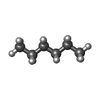 ChemComp-HEX: 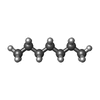 ChemComp-HP6: 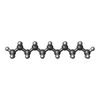 ChemComp-UND: 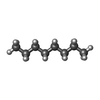 ChemComp-OCT: 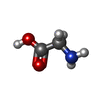 ChemComp-GLY: 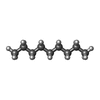 ChemComp-DD9:  ChemComp-NBU: 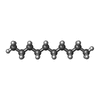 ChemComp-D10:  ChemComp-CL: 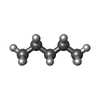 ChemComp-LNK: |
| Source |
|
 Keywords Keywords | MEMBRANE PROTEIN / glycine receptor subunit alpha-1 / glycine receptor subunit beta / Green fluorescent protein |
 Movie
Movie Controller
Controller Structure viewers
Structure viewers About Yorodumi Papers
About Yorodumi Papers











 homo sapiens (human)
homo sapiens (human)
